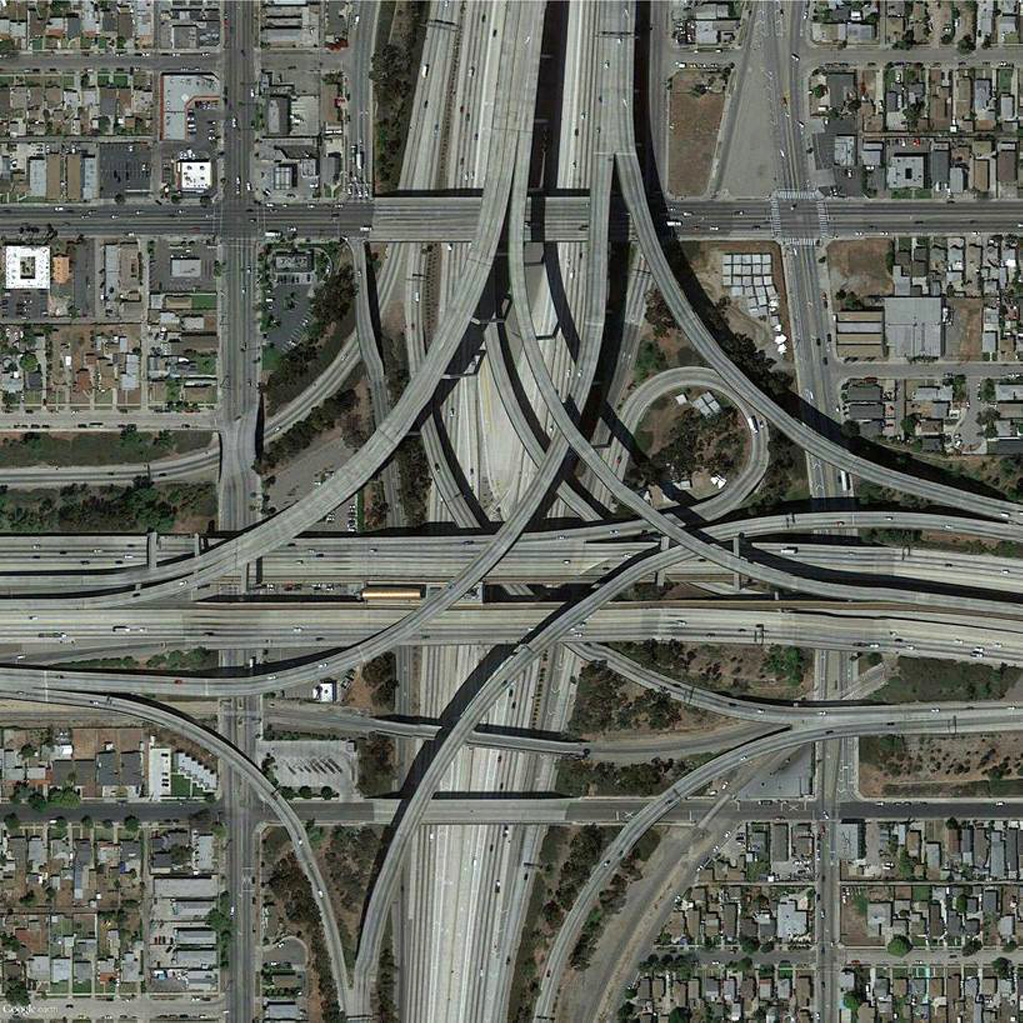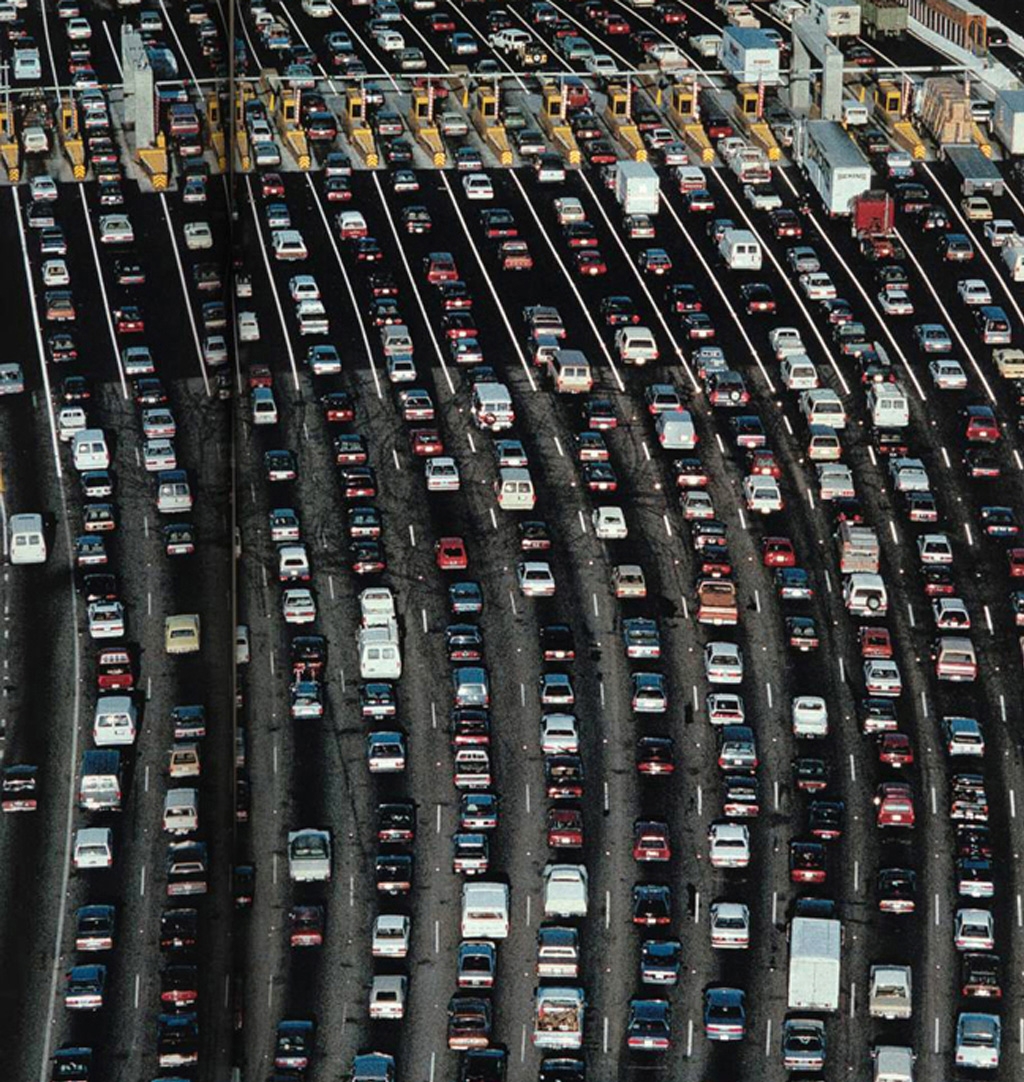RESEARCH
THE SPEED, A NEW DETERMINANT
Re-Modeling the Behavior of Speed as Infrastructure in the Hyperconected Urban Context
The road and transportation are well-known prerequisites for success in urban design. However, it is thus currently difficult to define the characteristics and behavior of the speed considered to be 'reasonable' in modern cities. Cities were transformed according to the car, and the new road systems, especially the highways, provided such freedom for journeys within the car. There is no other phenomenon that affected modern city planning more than the car; it transformed the citizens into drivers, and cities were designed for a new type of society moving by their cars: a socially hybrid, auto-mobilized society. At this point, the research will investigate the physical, psychological, and sociological constructs of speed in the urban context and consider it one of the main determinants of urban design.
Reflections that allow thinking about the speed of societies and mobile and immobile structures within urbanization would provide a deeper understanding from the point of view of architecture, in particular from the point of view of mobility. The construction of speed as a framework, along with various aspects of life, would inseparably combine intellectual, scientific, and poetic components to seek the image of modern man collectively.
The city is a complex structure that spans the humanities as well as the emotional experiences made by thought and imagination. The representation of speed requires an approach that must be at the same time theoretical and technical, where theory and experiments are thus in close relation to interdisciplinary studies. Could we ever imagine a city designed in accordance with speed? Or, when we think about future cities, what could we imagine about the main design parameters using the same methods of functional division or zoning? I think we can start adding speed as a new structure and design parameter to urban transformation and bring today’s cities into question by the speed; do they really function accordingly?
To connect my studies to the future mobility context, first we need to look at the idea behind the car and the initiators of the modern process connectedly. In my courses, we start almost from the industrial revolution to examine the relation between man and machine together with the heavy impact of mechanization, and then connect to the last century over art manifestations, architectural paradigms, and images of movement to define the creative dynamics of the time and the need for change. For example, we talk about Futurism to see how speed, in conjunction with mental metamorphosis, would shape the future during the modern period concerning the idea behind the car. If we go almost a century back in history and meet the car, we inherently see the speed there; the idea of the car was not only about carrying people from A to B but also making people faster. We could go from A to B in any way, but the new life that was packaged into industrialization and mechanization forced people to use cars in order to adapt themselves to this new vital parameter: speed. The new life offered by industrialization should have worked as precise as a machine and be remarkably fast as well, so the car was not only representing the image of individualism for man but also the future that will accrue faster than we expect.
I consider cars as metaphors to reflect the evolution of man, so-called the individual, as well as a process of change together with the urge of movement from the modern period to an undefined future. The car is still in its transformation and changing itself with respect to man's needs, so I am not working on one single car idea or concept but rather observing its evolution. The car has such a dramatic influence on modern city planning; apart from its emotional dimensions for man, it has dominated the cities with its physical existence, which has caused such contradictions in life. Meanwhile, how the urban context was affected by car issues throughout the modern period has always been the core of my studies to synchronize with the semantic content of the car in a wider sense. For example, in my classes, we talk a lot about American cities, like Los Angeles, Detroit, and so on, to describe how these cities were designed according to the car issue, as people are considered first as drivers rather than citizens in America.
Considering the current path and dramatic era that the car industry has been going through, it would easily be proven that the next few decades will bring major changes to car typologies. Unlike the past, producing cars blending beauty, speed, and freedom will not be the designer's primary concern; instead, the challenge will be leading to greater diversity and customization in urban contexts. The formula will be to blend the car and the speed into maximum customization, better adaptation, and improved integration by considering cars not only as mechanical but also as living archetypes in the urban context. At this point, speed, which constitutes a form of life, is one of the fundamental determinants of the car and will address new models for future hyperconnected urbanism.
In accordance with auto-mobility, urban transformation is blended, either accorded, throughout the speed during the modern process; therefore, it is significant to analyze the speed as a system, program, and design parameter for the future. For example, understanding how dramatically the car has changed modern city planning would give the impression that the concept of speed could strongly shape the future. To do so, we just need to analyze the cities before and after the car; the mechanization, together with the automation, has the strongest impact on designing what we understand from the city itself. So, what makes a city ‘’the city’’ in this context? The conjunction of time and speed, which is the biggest dilemma of the modern city, could give the answer over a semantic structure: the road. The road has been like an invisible wall to construct and distract the spaces defined by various functions within the modern city and perform an abstract image accelerated by the speed. One structure, the road, that is designed to provoke speed has brought such problems to the urban context; this is the point where the research aims to focus on.
*The project will build upon historical works performed in relation to current city phenomena and will extend upon future-proof concepts.
*Final reporting might deal with utopian design conjunctions that borrow different qualities from various types of mobile and immobile structures.

